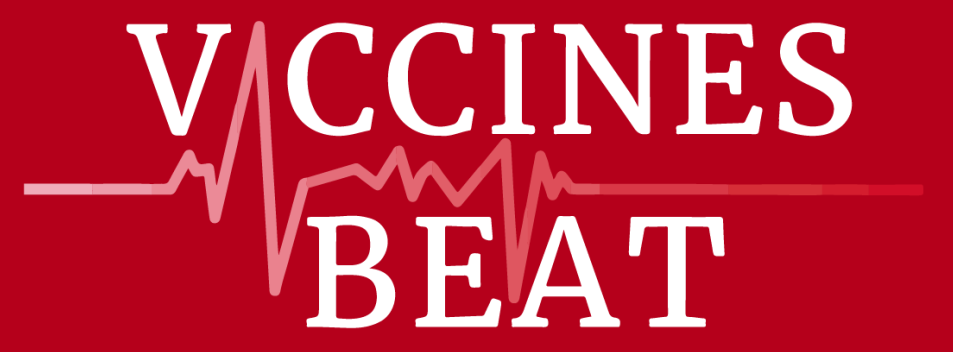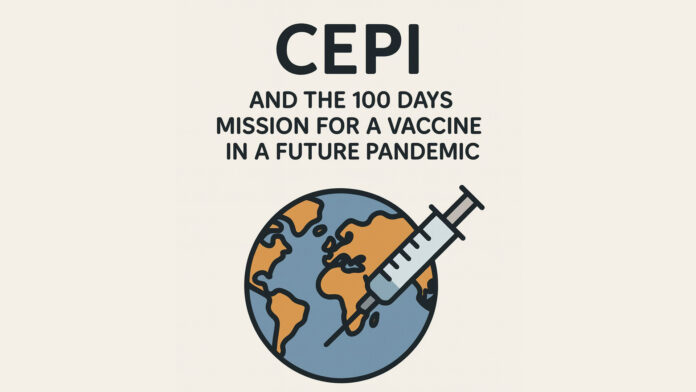The Spanish flu of 1918 was one of the deadliest pandemics in history, claiming about 50 million lives worldwide. This event remains a cornerstone for understanding pandemics, especially since it exposed the devastating impact of inadequate public health infrastructure. Poor housing, overcrowding, military conflicts (e.g., the First World War, the Mexican Revolution), and a severe lack of resources, minimal understanding of public health prevention strategies, and the absence of a vaccine all significantly contributed to the pandemic’s severity.
During the spring of 2009, when the World Health Organization (WHO) announced the AH1N1 influenza pandemic, it served yet another reminder of these vulnerabilities. This time, researchers achieved the creation of a vaccine, yet it was insufficient to stop the early stages of the pandemic. Millions became infected because of the delayed production and distribution of vaccinations, healthcare systems were strained, and economic losses scaled as infection and fear rates increased. The Centers for Disease Control and Prevention (CDC) and WHO estimate that between 151,700 and 575,400 people died worldwide during the first year of the AH1N1 pandemic.
Another significant event occurred in January 2020, when the WHO declared the COVID-19 pandemic a Public Health Emergency of International Concern. In contrast with previous pandemics, the scientific community achieved vaccine development through modern technology, such as mRNA platforms. COVID-19 vaccines were authorized for emergency use less than a year after studying the virus’s genetic sequence, demonstrating the powers of technology, innovation, and international cooperation. Despite this, unequal vaccination distribution revealed political and economic divides, exposing low-income nations and highlighting the need for a more efficient and fair response system.
As the most efficient way to contain and manage infectious diseases, vaccines are the mainstay of contemporary defenses against pandemics. Time is of the essence: the quicker a vaccine is created and implemented, the quicker a possible pandemic may be contained.
Based on these insights, the Coalition for Epidemic Preparedness Innovations (CEPI) disclosed the ambitious 100-Day Mission. This mission aims to transform global preparedness by creating vaccines within 100 days of discovering a new pathogen. It seeks to control the pandemic by utilizing scientific advancements and international cooperation before it worsens. The following section explores this revolutionary mission’s vision, structure, and possible impact.
The vision of the 100-Day Mission
The 100-Day Mission, led by CEPI and supported by international organizations such as the G7 and G20, is a bold attempt to transform vaccine development timeframes. This project uses cutting-edge technology and global collaboration to reduce the risk of future pandemics by aiming to develop a vaccine for the next Disease X in as little as 100 days. This mission is to prevent outbreaks before they worsen, reducing their devastating impact on health, society, and the economy.
The following are the key pillars to achieve the 100-Day Mission:
- Pre-existing Prototype Vaccines
The cornerstone of the 100-day Mission is the foundation of a “vaccine library”, a collection of prototype vaccines prepared for quick adaption and distribution against new threats.
The vaccine library currently seeks to keep up with varying pathogens by focusing on viral families with demonstrated pandemic potential, such as Paramyxoviridae, Flaviviridae, Togaviridae, Filoviridae, Bunyaviridae, Arenaviridae, Paramyxoviridae, Picornaviridae, among others.
B. Global Clinical Trial Infrastructure and Readiness
CEPI highlights that a global clinical trials network with pre-approved protocols is essential to accelerating vaccine development. CEPI intends to facilitate rapid responses to new threats by integrating worldwide manufacturing facilities and accelerating clinical trial procedures. A strong clinical laboratory network guarantees quick data readouts, allowing for prompt judgments on the efficacy and safety of vaccines.
Additionally, CEPI is creating a collection of prototype vaccines targeting important virus families, tested through Phase 1 clinical trials, to be able to adapt and respond to arising threats. This initiative enhances the global ability to adapt swiftly to new threats while maintaining a high standard of safety and efficacy.
C. Earlier Biomarkers of Immune Response
Accelerating vaccine timelines requires the identification of early biomarkers of a strong immune response and protection. Instead of the conventional 14–21-day period, immunological markers can now offer quicker signs of vaccine effectiveness.
D. Rapid Manufacturing Capacity
CEPI aims to streamline manufacturing procedures for quick initial and scale output. Within days, rapid activation is guaranteed via a network of manufacturing facilities with capacity set aside for several platforms. Further bolstering rapid vaccine manufacture and delivery are developments in next-generation vaccine technologies, including mRNA.
E. Early Characterization of Pathogens
Enhancements in surveillance capacity are essential for early outbreak detection and response. CEPI prioritizes standardizing global procedures for sharing genetic sequences and initiating outbreak alarms. During the early stages of an outbreak, sophisticated technologies like in-silico modeling are essential for determining correlates of protection and evaluating possible toxicity. These innovative techniques offer crucial information to support prompt and efficient reactions.
Benefits Across Sectors
Economic Impacts of the 100-Day Mission
Besides being a revolutionary method for pandemic preparedness, the 100-Day Mission is also a crucial economic strategy. Pandemics have historically caused significant financial damage. For example, the COVID-19 pandemic cost the global economy $12.5 trillion by 2024 due to lost productivity, healthcare expenses, supply chain disruptions, and decreased customer confidence. Besides, it caused a 3.4% drop in global gross domestic product (GDP) in 2020, equating to over $2 trillion in lost output. If countries had implemented non-pharmaceutical interventions (NPIs) as effectively as they did historically, the 100-Day Mission could have prevented an estimated 8.33 million deaths (95% credible interval [CrI]: 7.70–8.68 million) globally, with the majority occurring in lower-middle-income countries. This would equate to a monetary benefit of approximately US$14.35 trillion (95% CrI: 12.96–17.87 trillion) based on the value of statistical life-years saved. Additionally, investments in manufacturing and health systems could further increase the number of deaths averted to 11.01 million (95% CrI: 10.60–11.49 million).
A postponed vaccination response during AH1N1 resulted in a heavy burden on healthcare systems and lost chances to stop deaths. On the other hand, the COVID-19 pandemic has brought to light the potential of rapid vaccine rollout to save billions of dollars in economic expenses and millions of lives.
Figure 1 presents a comparison of the estimated outcomes of vaccine deployment during the 100-Day Mission in terms of lives saved and financial gains in U.S. dollars. As shown, averted deaths would be higher on low-middle-income-countries (LMICs) than high-income-countries (HICs), nonetheless, as expected due to the higher quality of life, the value of statistical life is expected to be higher when prompt vaccination is implemented in High income countries.
Figure 1. Estimated impact of lives saved and economic benefits across pandemic scenarios with prompt vaccine deployment (100-Day Mission).
(Data obtained from: Barnsley G, Olivera Mesa D, Hogan AB, Winskill P, Torkelson AA, Walker DG, et al. Impact of the 100 days mission for vaccines on COVID-19: a mathematical modelling study. Lancet Glob Health. 2024 Nov;12(11): e1764–74.)
International collaborations are essential to guaranteeing the equitable distribution of the resources and expertise required to implement the 100-Day Mission. International financial responsibilities, including investment in infrastructure, research, and innovation, address the difference between high- and low-income countries. During pandemics, these collaborations reduce inequities, guaranteeing universal vaccine access and promoting international economic stability .
In addition, the economic benefits of the 100-Day Mission extend across numerous sectors such as healthcare, tourism, education, and many others.
Conclusion
The 100-day Mission is a bold and necessary step forward regarding pandemic preparedness. By focusing on speed, scalability, commitment from stakeholders and governments, and overall equity, the strategy could help mitigate the catastrophic effects of future pandemics, preserve social cohesion and economic stability, and safeguard global health. The stakes of pandemic preparedness make the world more interconnected. The 100-day Mission is a road map for a more resilient, post-Covid world in which lessons learned from the past inform an aggressive and integrated response to future health challenges.
Furthermore, safety must never be sacrificed for speed. Incorporating Phase 4 post-marketing surveillance is crucial for tracking the safety and efficacy of vaccines throughout time, particularly in varied populations. In addition to enhancing accountability and promoting public trust, this long-term monitoring ensures that the rapid rollout of vaccines stays morally and scientifically reliable.
Finally, implementation of better surveillance methods and microbiological libraries, in addition to the speed of vaccine manufacturing, regulatory approval, capacity building, education, and implementation in LMICs in the event of a future pandemic remains uncertain, highlighting the urgent need for comprehensive and equitable structural adaptations.
Acknowledgements:
To Dr. Yodira Guadalupe Hernandez-Ruiz from the School of Medicine, University of Monterrey, Mexico for the intense collaboration in the research and writing of this section.
References
1. Aligne CA. Lost Lessons of the 1918 Influenza: The 1920s Working Hypothesis, the Public Health Paradigm, and the Prevention of Deadly Pandemics. Am J Public Health. 2022 Oct;112(10):1454–64.
2. Morens DM, Taubenberger JK, Harvey HA, Memoli MJ. The 1918 influenza pandemic: Lessons for 2009 and the future: Crit Care Med. 2010 Apr;38:e10–20.
3. CDC. Centers for Disease Control and Prevention. 2019 [cited 2024 Dec 9]. 2009 H1N1 Pandemic (H1N1pdm09 virus). Available from: https://archive.cdc.gov/flu/pandemic-resources/2009-h1n1-pandemic.html
4. Khazeni N, Hutton DW, Garber AM, Hupert N, Owens DK. Effectiveness and Cost-Effectiveness of Vaccination against Pandemic (H1N1) 2009. Ann Intern Med. 2009 Dec 15;151(12):829–39.
5. Al Hajjar S, McIntosh K. The first influenza pandemic of the 21st century. Ann Saudi Med. 2010;30(1):1–10.
6. Figueroa JP, Hotez PJ, Batista C, Amor YB, Ergonul O, Gilbert S, et al. Achieving global equity for COVID-19 vaccines: Stronger international partnerships and greater advocacy and solidarity are needed. PLOS Med. 2021 Sep 13;18(9):e1003772.
7. Gouglas D, Christodoulou M, Hatchett R. The 100 Days Mission—2022 Global Pandemic Preparedness Summit. Emerg Infect Dis [Internet]. 2023 Mar [cited 2024 Dec 2];29(3). Available from: https://wwwnc.cdc.gov/eid/article/29/3/22-1142_article
8. Hatchett R. CEPI. Developing pandemic busting vaccines in 100 days. Available from: https://cepi.net//100-days
9. Bipartisan Commission on Biodefense. The Apollo Program for Biodefense: Winning the Race Against Biological Threats [Internet]. 2021. Available from: https://biodefensecommission.org/reports/the-apollo-program-for-biodefense-winning-the-race-against-biological-threats/
10. Li L, Wei Y, Yang H, Yan J, Li X, Li Z, et al. Advances in Next-Generation Coronavirus Vaccines in Response to Future Virus Evolution. Vaccines. 2022 Nov 29;10(12):2035.
11. Verma SK, Mahajan P, Singh NK, Gupta A, Aggarwal R, Rappuoli R, et al. New-age vaccine adjuvants, their development, and future perspective. Front Immunol. 2023 Feb 24;14:1043109.
12. Joe CCD, Segireddy RR, Oliveira C, Berg A, Li Y, Doultsinos D, et al. Accelerated and intensified manufacturing of an adenovirus‐vectored vaccine to enable rapid outbreak response. Biotechnol Bioeng. 2024 Jan;121(1):176–91.
13. Morabito KM, Cassetti MC, DeRocco AJ, Deschamps AM, Pierson TC. Viral Prototypes for Pandemic Preparedness: The Road Ahead. J Infect Dis. 2023 Oct 18;228(Supplement_6):S460–4.
14. Deschamps AM, DeRocco AJ, Bok K, Patterson LJ. Prototype Pathogens for Vaccine and Monoclonal Antibody Countermeasure Development: NIAID Workshop Process and Outcomes for Viral Families of Pandemic Potential. J Infect Dis. 2023 Oct 18;228(Supplement_6):S355–8.
15. Coalition for Epidemic Preparedness Innovations. Delivering Pandemic Vaccines in 100 Days. 2022.
16. Coalition for Epidemic Preparedness Innovations. CEPI. 2021 [cited 2024 Dec 2]. CEPI launches plan to tackle risk of future pandemics and epidemics. Available from: https://cepi.net//cepi-launches-plan-tackle-risk-future-pandemics-and-epidemics
17. Moore KA, Leighton T, Ostrowsky JT, Anderson CJ, Danila RN, Ulrich AK, et al. A research and development (R&D) roadmap for broadly protective coronavirus vaccines: A pandemic preparedness strategy. Vaccine. 2023 Mar;41(13):2101–12.
18. Cassetti MC, Pierson TC, Patterson LJ, Bok K, DeRocco AJ, Deschamps AM, et al. Prototype Pathogen Approach for Vaccine and Monoclonal Antibody Development: A Critical Component of the NIAID Plan for Pandemic Preparedness. J Infect Dis. 2023 Jun 15;227(12):1433–41.
19. International Pandemic Preparedness Secretariat. 100 days mission – Third Implementation Report [Internet]. 2024 [cited 2024 Dec 3]. Available from: https://ippsecretariat.org/publication/third-implementation-report/
20. Dyvik EH. Statista. 2024 [cited 2024 Dec 4]. Impact of the coronavirus pandemic on the global economy – Statistics & Facts. Available from: https://www.statista.com/topics/6139/covid-19-impact-on-the-global-economy/#topicOverview
21. Barnsley G, Olivera Mesa D, Hogan AB, Winskill P, Torkelson AA, Walker DG, et al. Impact of the 100 days mission for vaccines on COVID-19: a mathematical modelling study. Lancet Glob Health. 2024 Nov;12(11): e1764–74.
22. Farlow A, Torreele E, Gray G, Ruxrungtham K, Rees H, Prasad S, et al. The Future of Epidemic and Pandemic Vaccines to Serve Global Public Health Needs. Vaccines. 2023 Mar 17;11(3):690.
23. Li K, Al-Amin M, Rosko MD. Early Financial Impact of the COVID-19 Pandemic on U.S. Hospitals. J Healthc Manag. 2023 Jul;68(4):268–83.
24. Nayak J, Mishra M, Naik B, Swapnarekha H, Cengiz K, Shanmuganathan V. An impact study of COVID‐19 on six different industries: Automobile, energy and power, agriculture, education, travel and tourism and consumer electronics. Expert Syst. 2022 Mar;39(3):e12677.
25. Salmanton-García J, Wipfler P, Leckler J, Nauclér P, Mallon PW, Bruijning-Verhagen PCJL, et al. Predicting the next pandemic: VACCELERATE ranking of the World Health Organization’s Blueprint for Action to Prevent Epidemics. Travel Med Infect Dis. 2024 Jan;57:102676.
26. Saville M, Cramer JP, Downham M, Hacker A, Lurie N, Veken LV der, et al. Delivering Pandemic Vaccines in 100 Days — What Will It Take? N Engl J Med. 2022 Jul 13;387(2):e3.
27. Hernandez-Ruiz YG, Lopatynsky-Reyes EZ, Ulloa-Gutierrez R, Avila-Agüero ML, Rodriguez-Morales AJ, Basa JE, Nikiema FW, Chacon-Cruz E. 100-Day Mission for Future Pandemic Vaccines, Viewed Through the Lens of Low- and Middle-Income Countries (LMICs). Vaccines. 2025; 13(7):773. https://doi.org/10.3390/vaccines13070773
28. Hernandez-Ruiz YG, Lopatynsky-Reyes EZ, Ulloa-Gutierrez R, Avila-Agüero ML, Rodriguez-Morales AJ, Basa JE, Nikiema FW, Chacon-Cruz E. 100-Day Mission for Future Pandemic Vaccines, Viewed Through the Lens of Low- and Middle-Income Countries (LMICs). Vaccines (Basel). 2025 Jul 21;13(7):773. doi: 10.3390/vaccines13070773.







